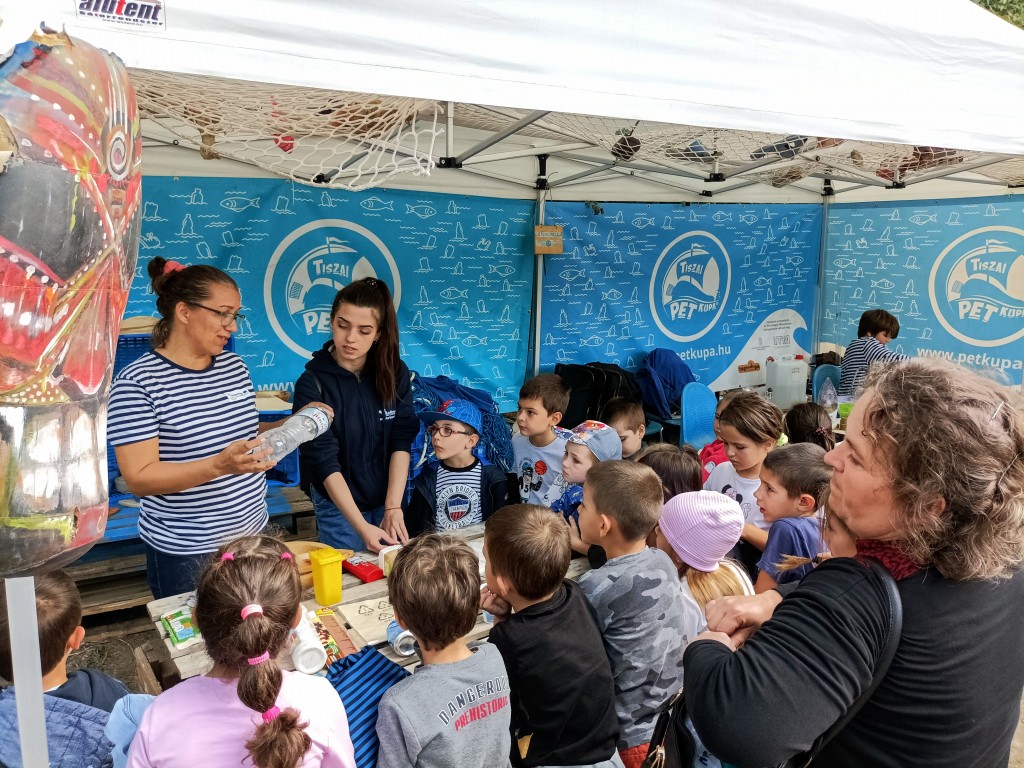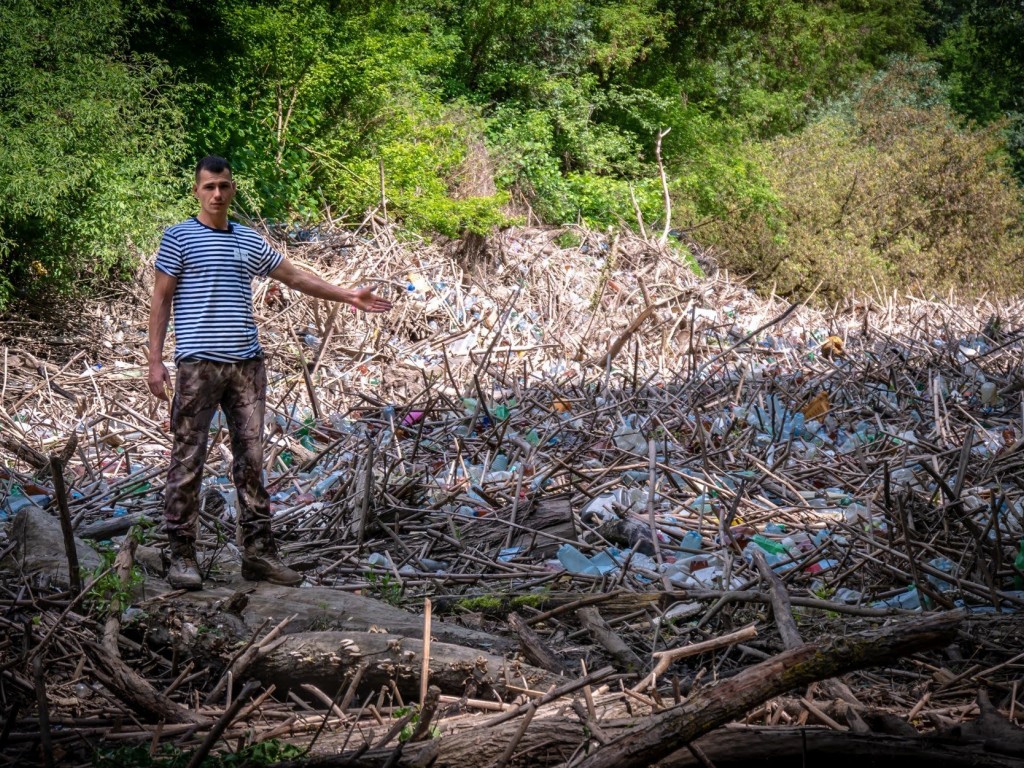Attila Dávid Molnár on Tid(y)Up's Ongoing Mission to Combat Plastic Pollution
22-08-2023
As the chairman of Tid(y)Up's project lead partner, founder of the Plastic Cup initiative, and director of Naturefilm.hu Society, Attila Dávid Molnár has been at the forefront of the battle against plastic pollution on the Danube and the Black Sea. Despite the completion of the Tid(y)Up project over six months ago, Attila and his team continue their relentless efforts. In collaboration with the International Commission for the Protection of the Danube River (ICPDR), they are diligently working on a policy paper aimed at condensing their extensive research findings. The objective? To provide Danube countries with practical recommendations that can effectively reduce plastic pollution in their rivers. In this interview, Attila sheds light on the project's progress, future plans, and the urgent need for collective action to protect our precious water resources.
July 10, 2023
Collecting waste on the river Tisza.
1. How have the project results been used?
I think that the most valuable outcomes of the Tid(y)Up project, which directly impact our daily work, can be categorized into three main groups.
Firstly, the project extensively investigated plastic pollution monitoring protocols. Significant progress has been made in evaluating coastal macroplastic accumulations. From citizen science approach to remote sensing, we applied and tested a lot of methods. However, the most noteworthy and adaptable results stem from the research conducted on microplastic monitoring methods. The measurement of microplastic pollution in rivers is a crucial and challenging task. We endeavored to assist the scientific community by comparing the applicability and effectiveness of the three major methods: driftnet, sedimentation box, and suction pump. Our evaluation also factored in the overall cost of operating each method. This report will greatly benefit individuals seeking harmonized microplastic monitoring methods in fluvial systems.
The second major achievement is not only the removal of over 10 tons of riverine litter from the Danube River Basin by the project partners themselves but also the creation of a book. The community river cleanup actions organized within the framework of Tid(y)Up were highly effective in raising awareness and fostering community building. However, the true significance of these collective efforts became evident when all partners came together to share their experiences and compile a comprehensive handbook. The first volume of Aquatic Plastic, titled "Transnational River Cleanup Handbook," is a beautifully illustrated, informative, easy-to-read, and comprehendible 100-page guide. It provides invaluable assistance to NGOs, experts, and individuals interested in participating in the cleanup of rivers from plastic pollution.
Last but not least, the project resulted in the zero waste FLEX exhibition. This Floating Exhibition was constructed using 90% recycled or reclaimed materials, particularly recycled riverine litter. Essentially a repurposed old ferry, it offers a substantial area for exhibitions, training sessions, workshops, and community activities. As we speak, a summer camp of future RiverSavers is undergoing training on the FLEX, providing them with an exciting adventure. While there are certainly other outcomes of the project, I consider these three to be the most significant.
2. Was the project's impact on policy making as expected?
Personally, I did not hold high expectations in this regard. As an NGO headquartered in Hungary but operating across all Tisza countries, we have grown accustomed to facing difficulties, navigating overcomplicated bureaucracy, and engaging in long-term projects that take years to come to fruition. As of the time of this interview, over six months have passed since the completion of Tid(y)Up. Nevertheless, we continue to work almost on a daily basis on a policy paper in close cooperation with the International Commission for the Protection of the Danube River (ICPDR). Our aim is to condense all the findings into this document, with the hope that these recommendations can be utilized by Danube countries to effectively reduce plastic pollution in their rivers. The strong cooperation with the ICPDR stems from our eagerness to present Tid(y)Up results at international forums. In addition to project meetings and dissemination events, we have shared our findings in various expert group meetings of the ICPDR. Abstracts and papers based on the project results have been accepted for the forthcoming ISWA forum, and we are hopeful for their inclusion at the World's Large Rivers Conference in Vienna. The primary message I want to convey here is the significant ties and interconnections we discovered between waste and water management and plastic pollution, which are detailed in the policy paper. Furthermore, we explored the possibility of granting personal rights to the Tisza River, the most polluted tributary of the Danube. However, given the ongoing war and political tensions between Hungary and Ukraine, which we deeply regret, we believe it is a topic that needs to be postponed for the time being.
The primary message I want to convey here is the significant ties and interconnections we discovered between waste and water management and plastic pollution, which are detailed in the policy paper.
3. Have the project results influenced policy decisions or led to any changes in the field?
Yes, surprisingly, even within a short time frame, we have witnessed an increasing awareness among neighboring countries regarding the downstream impact of their pollution. In Tid(y)Up, we placed special emphasis on communication. During the initial phase of the project, we organized workshops on digital literacy and video production. This led to a significant increase in media output from our project partners, including the creation of short videos and posts. The roundtable discussions took this networking activity to a whole new level. For instance, during a regional workshop held in Tokaj, we were pleasantly surprised to see the event turn into an international gathering, with the participation of waste management experts from Ukraine and water authority experts from Romania. Now, two years later, we can observe tangible results from these efforts. The same waste management company that attended the workshop has successfully diverted over 500 tons of household waste from the river. Additionally, trash fences have been installed in various Romanian rivers. These actions taken in the headwater regions have had a fundamental impact on the downstream sections of the rivers.
4. Was there any resistance or challenges in incorporating the project results into their work?
Certainly, there has been and continues to be resistance. Nobody takes pride in plastic emissions and pollution events, making it challenging to obtain reliable datasets. Moreover, water engineering organizations, typically focused on flood management, are not particularly enthusiastic about taking on additional responsibilities related to plastic pollution. However, Hungary stands as a unique and inspiring exception in this regard. The Water Authorities, especially those along the Tisza River, have done a magnificent job intercepting and removing riverine litter, predominantly plastics.
In the upstream regions, the FETIVIZIG, and in the middle sections, the KÖTIVIZIG (both being water management directorates), manage hundreds of tons of riverine litter each year, most of which originates from upstream countries. This effort is largely facilitated and recycled through the Plastic Cup initiative. Nonetheless, there is still much work to be done. While flood monitoring is a well-established and efficient system with a rich tradition, we have a long way to go in terms of developing a reliable plastic pollution alert system. Additionally, EU countries face difficulties in meeting the suggestions outlined in the Water Framework Directive. Romania, for example, not only grapples with concerns over illegally deposited plastics but also contends with significant sources of legacy pollution, as indicated by recent reports. Moreover, non-EU countries like Ukraine, where resources are primarily directed towards war efforts, struggle to prioritize environmental initiatives. One of our Ukrainian partners, who has conducted remarkable river cleanup actions, has yet to be reimbursed for their costs. This overall atmosphere places environmental NGOs in an incredibly challenging position, I must admit.
Hungary stands as a unique and inspiring exception in this regard. The Water Authorities, especially those along the Tisza River, have done a magnificent job intercepting and removing riverine litter, predominantly plastics.
5. How can future projects better support use of the results to drive positive change?
During the implementation of Tid(y)Up, I believe we were overwhelmed with numerous project goals and tasks. Managing plastic pollution in rivers is inherently challenging, but our situation became even more complex due to the difficulties caused by COVID-19 and the ongoing war in Ukraine. The resulting inflation added further strain, and we struggled immensely to avoid canceling certain activities and outputs. Eventually, we were able to achieve what we set out to accomplish, but it came at a cost—we couldn't dedicate as much time and effort to networking and establishing synergies with other projects. Nonetheless, I am truly proud of what we have achieved, and all our outputs are readily available on the project's official website. Currently, our focus lies on sharing these outputs across different platforms to reach a much larger audience. The Aquatic Plastic book, the ICPDR recommendation paper, and the videos and documentary we have produced all serve this purpose. Furthermore, we have a unique Floating Exhibition that I am confident will effectively raise awareness. After all, when we named our project Tid(y)Up, we were well aware that our aim extended beyond river cleanups—we wanted to prevent future plastic pollution events. We firmly believe that communication and education play crucial roles in achieving this goal.

For more interviews with changemakers from the Danube region, go here.


